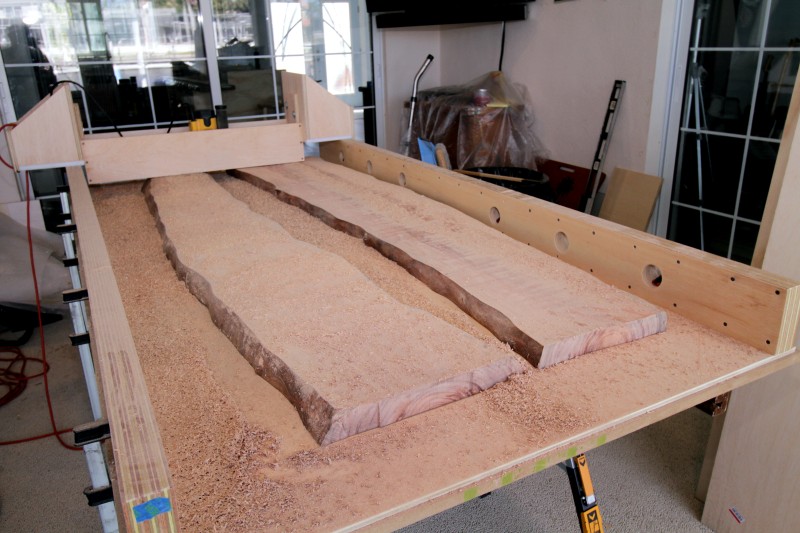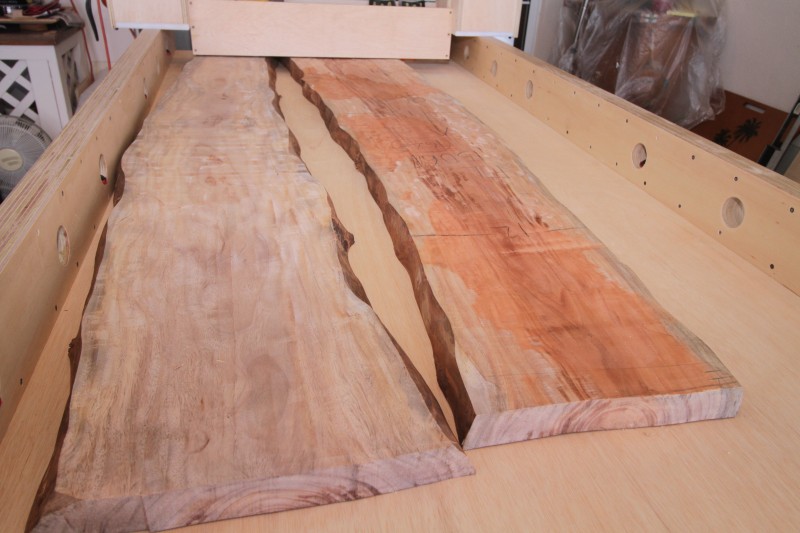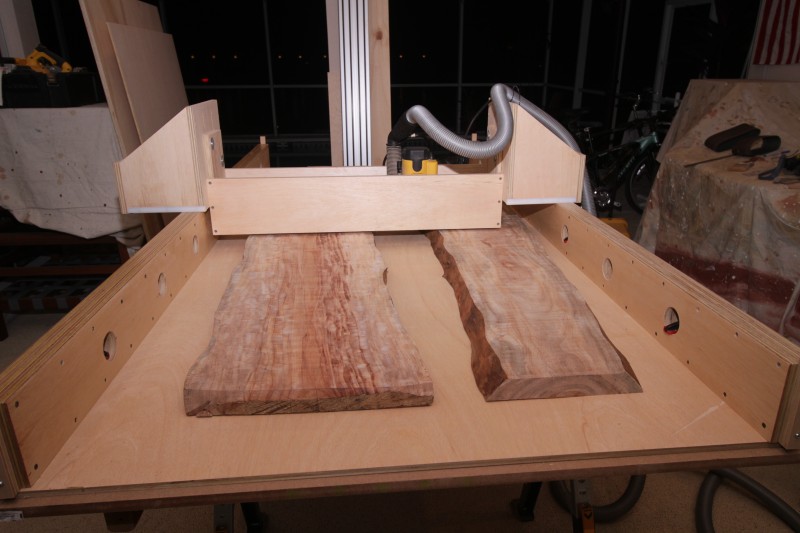Thanks, John. I made the sides of the sled tall to minimize sag. I suppose I could do what you suggested and double laminate one side. The reason I didn't question the Offerman method of holding the top of the router is I thought there would be times I would be unable to reach the two handles on the router. I thought that's why Offerman used the top hold method.
When the sled is close to the end, I am able to get my hands on both router handles but once I'm about two feet from the end, I can no longer do that. I could lower the legs on the sawhorses. Will have to do a dry run and see how that goes. But you make a great point the router will catch at some point. Better safe than sorry.
I was going to make the wing box with a bottom but I didn't think the plywood would slide all that well, even with a few coats of poly. What I was thinking was putting plywood on the bottom and covering it with a sheet of 1/4" UHMW. The reason I made the wing box so wide is I wanted to reduce transferring any imperfections in the rail onto the slab.
Anyway, here's what it looks like now:
The UHMW are only 3/4" wide so that kind of defeats that transfer issue I was trying to address. And it doesn't slide nearly as well as when the UHMW was parallel to the rail.
One thing I do like is there is plenty of room to tighten the knobs
But dialing in a precise elevation will be tricky.
And I will have a good view of the work being done
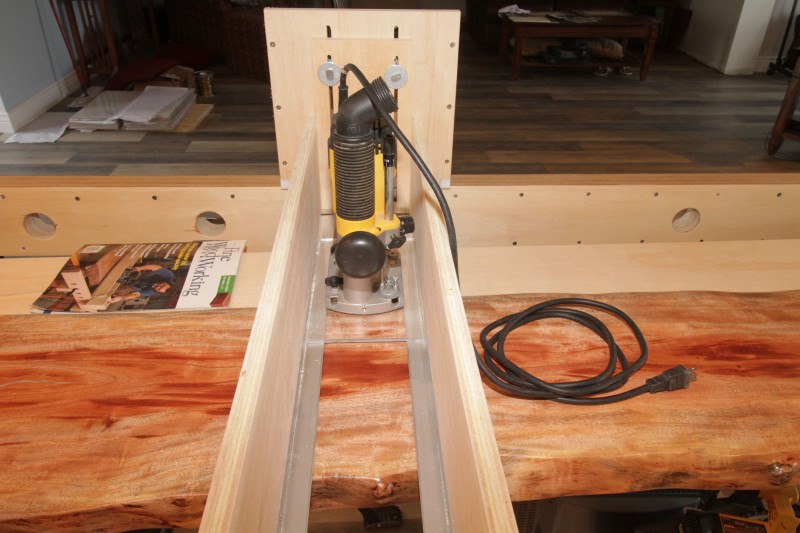




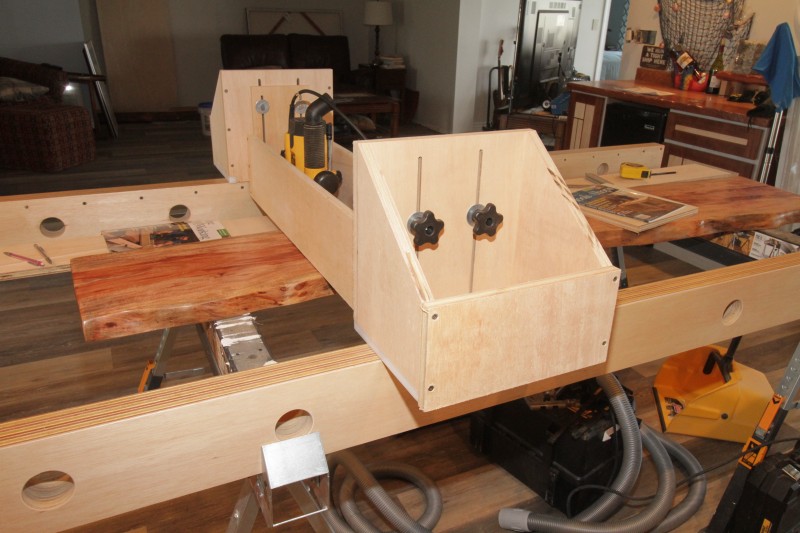

 Reply With Quote
Reply With Quote






 As long as one has the shop space to accomodate the overhang on each pass, things couldn't be simpler and the router is absolutely fixed with no reaching required to "do the deed".
As long as one has the shop space to accomodate the overhang on each pass, things couldn't be simpler and the router is absolutely fixed with no reaching required to "do the deed".

